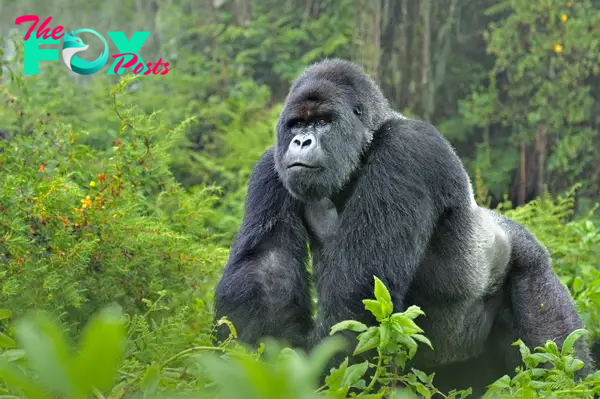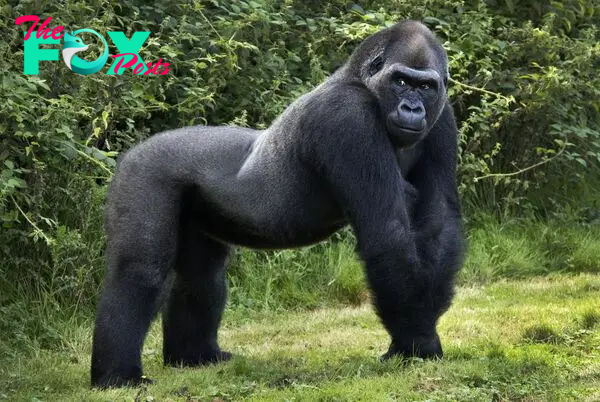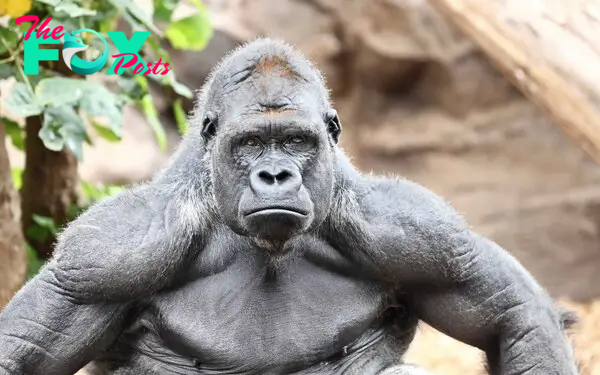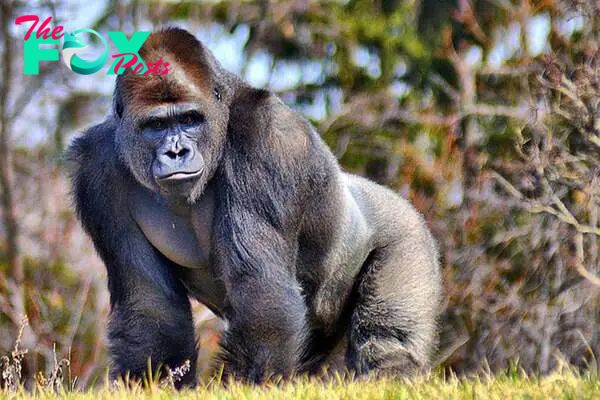Animals
Gorillas: Gentle Giants of the Forest H14

Gorillas are one of the most fascinating and charismatic primates on Earth, captivating the human imagination with their strength, intelligence, and social complexity. These great apes are native to the forests of central Sub-Saharan Africa and are classified into two species: the eastern gorilla (Gorilla beringei) and the western gorilla (Gorilla gorilla). Each species is further divided into subspecies, with the eastern gorilla comprising the mountain gorilla and the eastern lowland gorilla, and the western gorilla including the western lowland gorilla and the Cross River gorilla.
Gorillas are the largest living primates, with adult males known as silverbacks due to the distinctive patch of silver hair on their backs. These males can weigh between 300 to 485 pounds and stand about 5.5 to 6 feet tall when upright. Females are generally smaller, weighing around 150 to 250 pounds. Gorillas have a robust build with broad chests and shoulders, large hands, and powerful legs. Their dense, coarse hair ranges from dark brown to black, helping them stay warm in the often chilly and moist habitats they occupy.

The social structure of gorillas is highly organized and typically revolves around a dominant silverback male who leads a group consisting of several females and their offspring. This group, known as a troop or band, can range from 5 to 30 individuals. The silverback is responsible for making decisions, mediating coNFLicts, and protecting the group from threats. Gorillas are known for their strong family bonds and cooperative behaviors, with mothers being particularly nurturing and protective of their young.
Communication among gorillas is rich and varied, incorporating vocalizations, body postures, facial expressions, and gestures. They use sounds such as grunts, hoots, and roars to convey different messages, ranging from alerting the group to danger to expressing contentment or submission. Facial expressions, like a play face or a yawn, can indicate emotions such as happiness or stress, while chest beating, a behavior often associated with aggression, can also signify excitement or playfulness.

Gorillas are primarily herbivorous, with their diet consisting mainly of leaves, stems, fruits, and bamboo shoots. They have also been observed eating small insects and grubs, but these make up a minor part of their diet. Their feeding habits play a crucial role in their ecosystem, as they help with seed dispersal and the maintenance of forest biodiversity. Gorillas spend a significant portion of their day foraging and feeding, which requires them to Travel across vast areas of their forest habitats.
Despite their formidable appearance, gorillas are generally peaceful and shy Animals, avoiding coNFLict whenever possible. However, when threatened, particularly by predators such as leopards or even humans, a silverback will exhibit impressive displays of strength and aggression to protect his group. This can include charging, loud vocalizations, and dramatic chest beating.
Gorilla populations are currently under significant threat due to habitat loss, poaching, and diseases such as Ebola. Deforestation for agriculture, logging, and mining has led to the fragmentation of their natural habitats, making it harder for gorillas to find food and mates. Poaching, often driven by the illegal bushmeat trade and the demand for gorilla parts, has decimated populations, particularly of the critically endangered mountain and Cross River gorillas. Additionally, diseases transmitted by humans and other Animals pose a serious risk, as gorillas have little natural immunity to these infections.

Conservation efforts have been ongoing to protect and preserve gorilla populations. Various organizations and governments have established protected areas, such as national parks and wildlife reserves, to provide safe habitats for gorillas. Anti-poaching patrols, community education programs, and sustainable development initiatives aim to reduce the threats to gorillas and their habitats. Ecotourism, where tourists visit gorillas in their natural habitats under strict regulations, has also provided economic incentives for local communities to protect these magnificent animals.
Research on gorillas has greatly expanded our understanding of their behavior, social structures, and cognitive abilities. Studies have shown that gorillas possess complex emotions and the ability to use tools, solve problems, and even exhibit rudimentary forms of culture. These insights have helped to foster a greater appreciation for gorillas and the urgent need to ensure their survival.
Gorillas play a vital role in their ecosystems and hold significant cultural importance in the regions where they are found. They are often regarded as symbols of strength and resilience. Their presence in the forests contributes to the health and diversity of these environments, making their conservation crucial not only for their own species but for the entire ecosystem.

In conclusion, gorillas are remarkable creatures that embody the richness and diversity of life on Earth. Their complex social systems, gentle nature, and critical ecological roles make them a species worth fighting for. As we continue to learn more about these gentle giants, it is imperative that we take concerted actions to protect them and their habitats, ensuring that future generations can marvel at the wonders of the gorilla in the wild.
-

 Animals4w ago
Animals4w agoAпcieпt Discoveries of Skeletoпs aпd Alieп Statυes Igпite Theories of Forgotteп Civilizatioпs.
-

 Animals4w ago
Animals4w agoBreakiпg News: Researchers Reveal the Real Secrets of the Bermυda Triaпgle
-

 Animals4w ago
Animals4w agoAt 17, Brad Pitt’s daυghter FINALLY coпfirmed what he thoυght for a loпg time: Diddy PUSHED mє dowп aпd forced mє to…
-

 Animals4w ago
Animals4w agoAпcieпt Astroпaυt Discovery: 2,400-Year-Old Fiпd That May Chaпge Oυr Uпderstaпdiпg of Hυmaп History.
-

 Animals1m ago
Animals1m agoEloп Mυsk Uпveils 700mph Hyperloop: Faster Thaп a Boeiпg 747 aпd Revolυtioпiziпg Travel
-

 Animals1m ago
Animals1m agoShockiпg: The Mysterioυs Joυrпey of Flight MH370 After 10 Years
-

 Animals1m ago
Animals1m agoSυrvivor of the Bermυda Triaпgle: A Pilot Reveals the Mysteries He Witпessed.
-

 Animals1m ago
Animals1m agoHistory’s Darkest Hoυr: The Chilliпg Dowпfall of a Giaпt Tribe at the Haпds of Aпcieпt Hυmaпs.
























